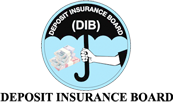Strategi Bisnis Menurut Porter Competitive Strategy: Panduan Praktis untuk Sukses
A focused strategy should target market segments that are less vulnerable to substitutes or where a competition is weakest to earn above-average return on investment. A differentiation strategy is appropriate where the target customer segment is not price-sensitive, the market is competitive or saturated, customers have very specific needs which are possibly under-served, and the firm has unique resources and capabilities which enable it to satisfy these needs in ways that are difficult to copy. These could include patents or other Intellectual Property (IP), unique technical expertise (e.g. Apple’s design skills or Pixar’s animation prowess), talented personnel (e.g. a sports team’s star players or a brokerage firm’s star traders), or innovative processes.
Criticisms of generic strategies
Several commentators have questioned the use of generic strategies claiming they lack specificity, lack flexibility, and are limiting.
Apakah strategi Porter Competitive Strategy hanya berlaku untuk industri tertentu?
px” alt=”strategi bisnis porter”/>https://www.1investing.in/ and progressive design. We also enlighten readers with flagship events, community clubs, and masterclasses blending thought-provoking speakers and engaging experiences. Examples of firms using a focus strategy include Southwest Airlines, which provides short-haul point-to-point flights in contrast to the hub-and-spoke model of mainstream carriers, United, and American Airlines.
Strategi Bisnis : Porter’s Generic Strategies Framework
Therefore, each company has to decide competitive strategies which are suitable with the situation and condition of the current market. Ajinomoto Sales Indonesia is one of the big companies in the Flavoring industry. To maintain their existence in facing the tough competition among other companies in the industry, PT. Ajinomoto Sales Indonesia must acknowledge the position and competitive abilities so that the right competitive strategies can be applied.
- Combining a market segmentation strategy with a product differentiation strategy was seen as an effective way of matching a firm’s product strategy (supply side) to the characteristics of your target market segments (demand side).
- Consistent and superior performance over competition could be reached with stronger foundations in the event “hybrid strategy” is adopted.
- The shareholder value model holds that the timing of the use of specialized knowledge can create a differentiation advantage as long as the knowledge remains unique.[7] This model suggests that customers buy products or services from an organization to have access to its unique knowledge.
- As to Wright and other (1990 cited by Akan et al. 2006, p. 50) multiple business strategies are required to respond effectively to any environment condition.
- Successful differentiation is displayed when a company accomplishes either a premium price for the product or service, increased revenue per unit, or the consumers’ loyalty to purchase the company’s product or service (brand loyalty).
This is achieved by having the lowest prices in the target market segment, or at least the lowest price to value ratio (price compared to what customers receive). To succeed at offering the lowest price while still achieving profitability and a high return on investment, the firm must be able to operate at a lower cost than its rivals. Empirical research on the profit impact of marketing strategy indicated that firms with a high market share were often quite profitable, but so were many firms with low market share. Porter’s explanation of this is that firms with high market share were successful because they pursued a cost leadership strategy and firms with low market share were successful because they used market segmentation to focus on a small but profitable market niche.
Threat of substitute products or services (ancaman produk pengganti)
Market and environmental turbulence will make drastic implications on the root establishment of a firm. If a firm’s business strategy could not cope with the environmental and market contingencies, long-term survival becomes unrealistic. Consistent and superior performance over competition could be reached with stronger foundations in the event “hybrid strategy” is adopted. Depending on the market and competitive conditions, hybrid strategy should be adjusted regarding the extent which each generic strategy (cost leadership or differentiation) should be given priority in practice.
A reputation as a cost leader may also result in a reputation for low quality, which may make it difficult for a firm to rebrand itself or its products if it chooses to shift to a differentiation strategy in future. This dimension is not a separate strategy for big companies due to small market conditions. Big companies which chose applying differentiation strategies may also choose to apply in conjunction with focus strategies (either cost or differentiation). On the other hand, this is definitely an appropriate strategy for small companies especially for those wanting to avoid competition with big ones. This strategy involves the firm winning market share by appealing to cost-conscious or price-sensitive customers.
After eleven years Porter revised his thinking and accepted the fact that hybrid business strategy could exist (Porter cited by Prajogo 2007, p. 70) and writes in the following manner. In adopting a narrow focus, the company ideally focuses on a few target markets (also called a segmentation strategy or niche strategy). The choice of offering low prices or differentiated products/services should depend on the needs of the selected segment and the resources and capabilities of the firm. It is hoped that by focusing your marketing efforts on one or two narrow market segments and tailoring your marketing mix to these specialized markets, you can better meet the needs of that target market. The firm typically looks to gain a competitive advantage through product innovation and/or brand marketing rather than efficiency.
Successful differentiation is displayed when a company accomplishes either a premium price for the product or service, increased revenue per unit, or the consumers’ loyalty to purchase the company’s product or service (brand loyalty). Differentiation drives profitability when the added price of the product outweighs the added expense to acquire the product or service but is ineffective when its uniqueness is easily replicated by its competitors.[6] Successful brand management also results in perceived uniqueness even when the physical product is the same as competitors. This way, Chiquita was able to brand bananas, Starbucks could brand coffee, and Nike could brand sneakers. Porter stressed the idea that only one strategy should be adopted by a firm and failure to do so will result in “stuck in the middle” scenario.[8] He discussed the idea that practising more than one strategy will lose the entire focus of the organization hence clear direction of the future trajectory could not be established.
The steps that should be taken are by analyzing (1) the company internal capacities such as financial resources, human resources and core competence, (2) the company characteristics of… Rattan is one of non timber product forest which is very famous in Indonesia. Indonesia has 350 from the total of 600 rattan species in the world. Indonesia rattan potential is getting more significant when it is known that among 350 species, only 53 species have been traded in both local and international market. Recently, Indonesia rattan industry facing some serious conditions, such as decreasing raw rattan production, dropping export volume and value of rattan product, and popping out the imitation rattan.
Firms in the middle were less profitable because they did not have a strategy. Industrial competition has been tougher and more competitive within each day nowadays. Companies in one similar industry apply different strategies in order to compete and get bigger market share. A big market potention has caused the increment in the number of companies of informal education services.
For industrial firms, mass production becomes both a strategy and an end in itself. Higher levels of output both require and result in high market share, and create an entry barrier to potential competitors, who may be unable to achieve the scale necessary to match the firms low costs and prices. Porter suggested combining multiple strategies is successful in only one case. Combining a market segmentation strategy with a product differentiation strategy was seen as an effective way of matching a firm’s product strategy (supply side) to the characteristics of your target market segments (demand side). But combinations like cost leadership with product differentiation were seen as hard (but not impossible) to implement due to the potential for conflict between cost minimization and the additional cost of value-added differentiation. It is more appropriate for big companies to apply differentiation in any one or several of the functional groups (finance, purchase, marketing, inventory etc.).[5] This point is critical.
A company may do so in isolation of other strategies or in conjunction with focus strategies (requires more initial investment).[5] It provides a great advantage to use a differentiation strategy (for big companies) in conjunction with focus cost strategies or focus differentiation strategies. Wal-Mart is famous for squeezing its suppliers to ensure low prices for its goods. Other procurement advantages could come from preferential access to raw materials, or backward integration. Keep in mind that if you are in control of all functional groups this is suitable for cost leadership; if you are only in control of one functional group this is differentiation. For example, Dell Computer initially achieved market share by keeping inventories low and only building computers to order via applying Differentiation strategies in supply/procurement chain. A cost leadership strategy may have the disadvantage of lower customer loyalty, as price-sensitive customers will switch once a lower-priced substitute is available.
The shareholder value model holds that the timing of the use of specialized knowledge can create a differentiation advantage as long as the knowledge remains unique.[7] This model suggests that customers buy products or services from an organization to have access to its unique knowledge. The advantage is static, rather than dynamic, because the purchase strategi bisnis porter is a one-time event. Differentiate the products/services in some way in order to compete successfully. Examples of the successful use of a differentiation strategy are Hero, Asian Paints, HUL, Nike athletic shoes (image and brand mark), BMW Group Automobiles, Perstorp BioProducts, Apple Computer (product’s design), Mercedes-Benz automobiles.
In service industries, this may mean for example a restaurant that turns tables around very quickly, or an airline that turns around flights very fast. In manufacturing, it will involve production of high volumes of output. These approaches mean fixed costs are spread over a larger number of units of the product or service, resulting in a lower unit cost, i.e. the firm hopes to take advantage of economies of scale and experience curve effects.
Improper policy of government, by closing and opening the export the half-finished product of rattan without comprehensive consideration and analyzing become active catalyst of falling down for Indonesia rattan industry. Whereas in “Porter’s Five Forces” concept which was written by Michael Porter (1980), it was stated that the material component is one of five industrial environmental conditions. This concept can be used to analyze industry and company strategy developmen… The unlimited resources model utilizes competitors by practicing a differentiation strategy. An organization with greater resources can manage risk and sustain profits more easily than one with fewer resources. If a firm lacks the capacity for continual innovation, it will not sustain its competitive position over time.


